Last Updated on: 5th August 2024, 11:22 am
The beautiful island of Nusa Penida, home to some of the region’s most idyllic beaches and diving spots, also happens to be Bali’s island of exile. Around 30km from the main island of Bali, Nusa Penida was once a penal colony. All types of criminals were sent here, from the 18th century all the way up until the 1930’s. But long before that, one of the most notorious villains from Balinese mythology was exiled here as well.
Nusa Penida is home to Mecaling, Bali’s demon king. Historically and to this day, conundrums such as diseases, flooding and other natural disasters occurring on the main island have been attributed to Mecaling and his army of invisible spirits. It’s no wonder, then, why Nusa Penida is often dubbed Bali’s “black magic island.”
During my time on neighboring Nusa Lembongan, I couldn’t resist a quick stop over at this mysterious island. Over the course of the day, I’d get to visit the home of Mecaling himself in addition to Bali’s most elaborate cave temple.
A Last-Minute Arrival
As the small rickety boat approached the shore of the island, I didn’t know quite what to expect. Just a few hours prior, I didn’t even think I’d end up making it to Nusa Penida. It was long past the 6am departure time of the public boats leaving from Nusa Lembongan, and I’d have to return to the main island the next day to catch a flight.
I decided to bring up the island with the boat captain of my snorkeling trip that morning, on the off chance that he might be able to take me there. And I was in luck. Not only could he take me there and back, but he also offered to be my guide.

Though I was already aware of some of the legends surrounding the island, I had little idea of what there was to actually see or do. Speaking with the captain, we quickly came up with a plan to visit some of the island’s most significant temples outlined in the map below:
Pura Dalem Ped and The Balancing of The Force
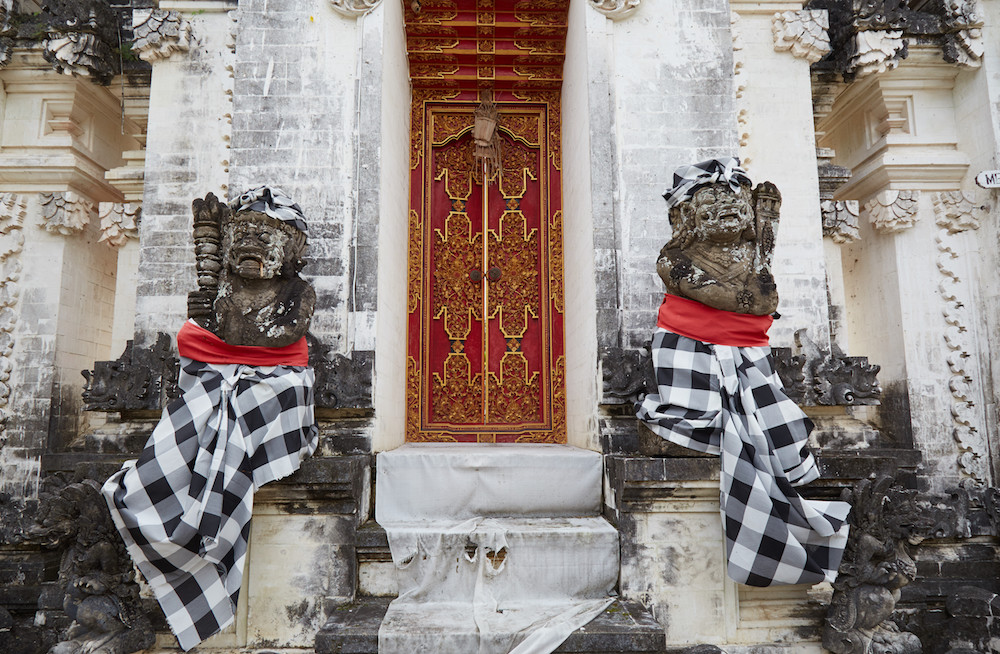
Each village in Bali has three special temples, or pura: Pura Puseh, a Vishnu temple facing the mountain, Pura Desa, the temple of the village founders situated in the center of town, and Pura Dalem, the “temple of the dead.” Pura Dalem temples are always facing the sea, as is the case here with Pura Dalem Ped. They’re also associated with deities related to the concept of death, such as Shiva, the witch Rangda, or, in regards to Pura Dalem Ped, the demon king Mecaling himself.
That’s right. Despite being feared and blamed for so many of the region’s ills, Mecaling is worshipped right here at this elaborate temple not too far from the island’s port.
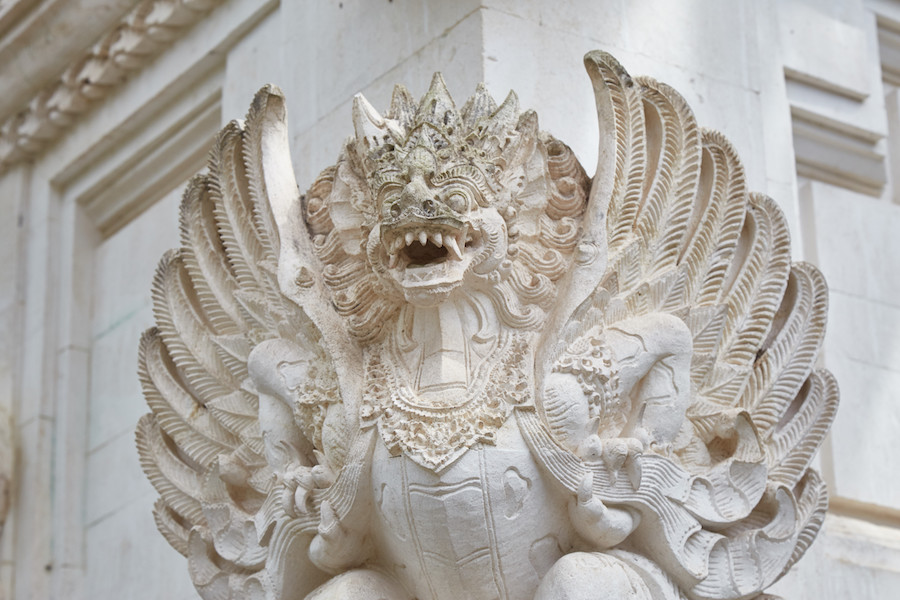
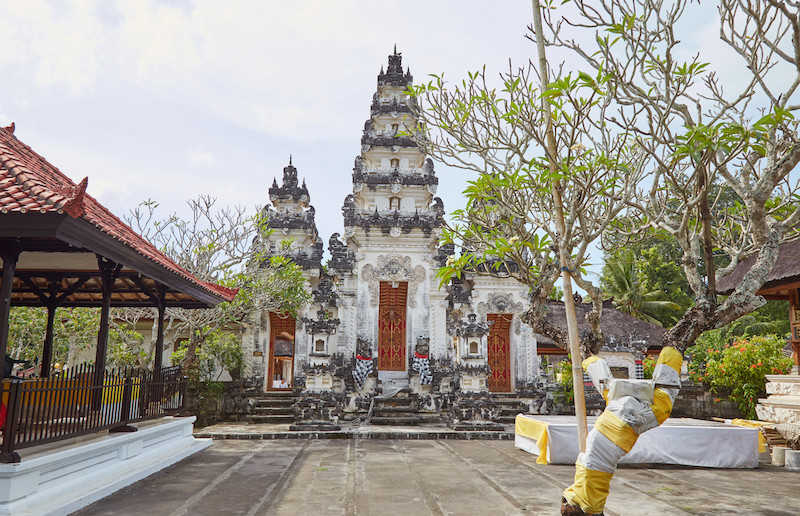
And it’s not just visited by local islanders, either. The Balinese in general consider it to be one of the region’s holiest temples, with people coming from all over Bali to attend a special festival held once every three years. To understand why something can be so feared, yet so honored and respected at the same time, we need to take a brief look at the Balinese concepts of duality and cosmic balance.
The Balinese believe that evil is not something that can ever be entirely banished, but simply kept at bay. The main goal of many Balinese ceremonies and rituals, then, is not to allow one force to completely overtake the other, but to maintain cosmic harmony.
This concept of duality is expressed all over the island in the form of polen, the checkered black and white cloth often covering temple statues or worn by participants of certain rituals. Think of it like the Balinese version of the Taoist yin yang. The same checkered pattern was also used by the ancient Egyptians, while Freemasons still adorn the floors of their lodges with it to this day.
The Balinese concept of duality, or rwa bhineda, is perhaps best demonstrated by the important ceremony known as the Barong dance. The performance revolves around a battle between the evil witch Rangda and the benevolent Barong, a mythological four-legged creature.
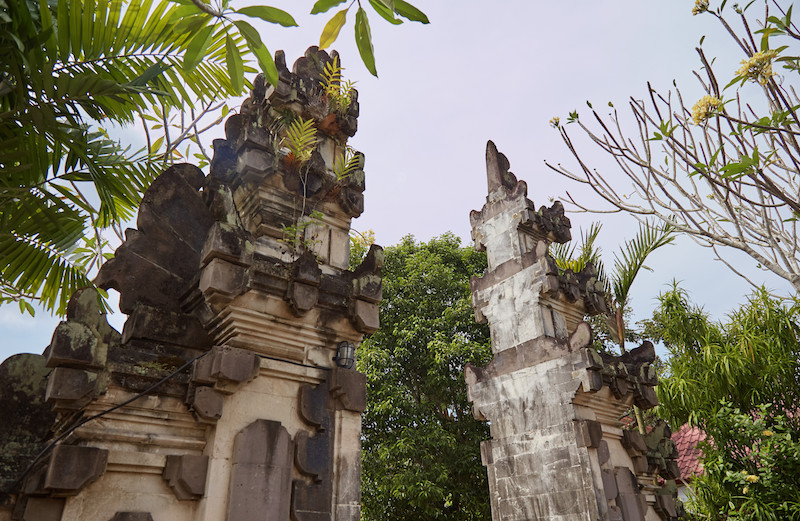
After a long and hard-fought battle, Barong comes out victorious, although Rangda is not killed. While the dark forces may have lost the battle, they’ve only been contained and kept under control – not completely wiped out. More importantly, cosmic balance has been maintained. In the grander scheme of things, Nusa Penida itself could be looked at as the darkness necessary to counteract Bali island’s forces of light.
Many of the ceremonies at Pura Dalem Ped are neither an attempt to praise nor destroy “evil,” but are simply meant to prevent Mecaling’s dark forces from getting out of control. Individuals or families might also visit to ask for protection from harm.
In Bali, power itself is considered to be neutral. Therefore, it’s certainly possible, though not always advised, to work with the spiritual forces of darkness in order to achieve good. On the other hand, it’s also suspected that some people do indeed visit Mecaling’s temple with nefarious purposes in mind. Some of those exiled to the island during its days as a penal colony, in fact, were people accused of practicing black magic. It’s unclear, though, why these dark arts practitioners would be sent to a place where they’d have even more ‘raw material’ to work with!
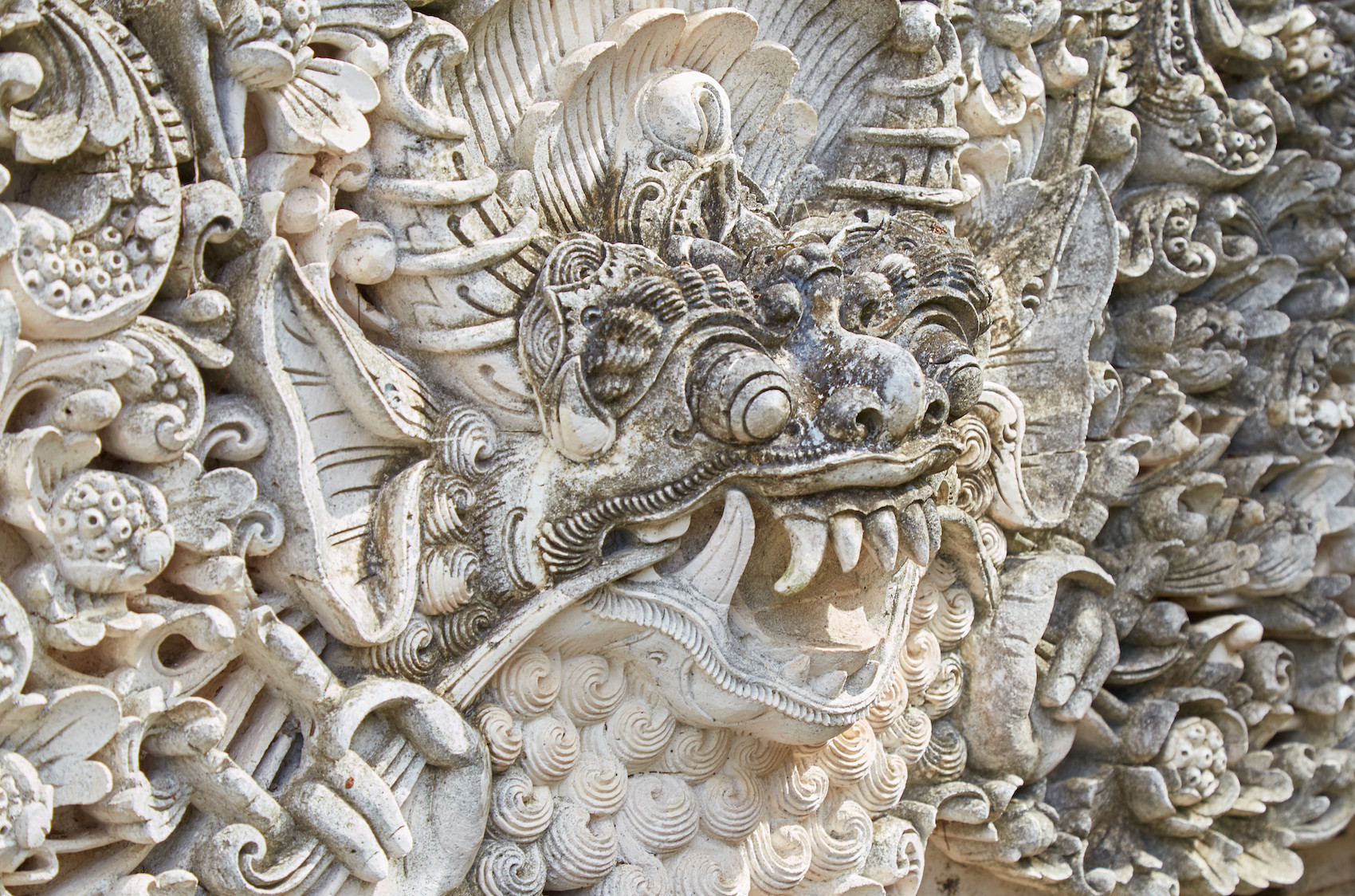
Goa Giri Putri: The Princess Cave
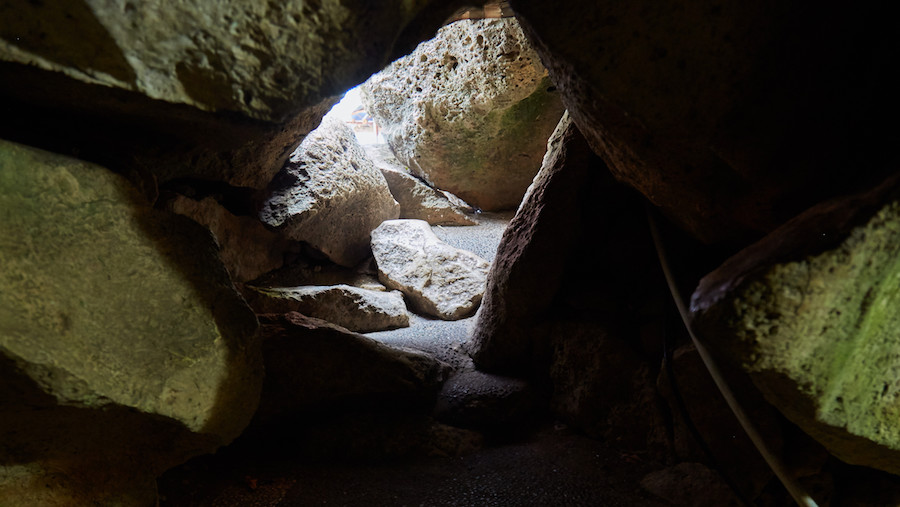
One of Nusa Penida’s most unique attractions is the elaborate cave temple of Goa Giri Putri. If you’ve visited other well-known cave temples like Goa Gajah or Goa Lawah, Goa Giri Putri is on a whole different level. This cave is so big, in fact, that it can supposedly fit thousands of worshippers at a time. Aside from several priests, however, its only permanent inhabitants are a large number of bats.
To enter the cave, you’ll have to walk up a series of steps for a few minutes before reaching the entrance area. While admission is technically free, in reality it’s not, as you’ll be expected to make a donation – somewhere in the Rp. 30 – 50,000 range.
After the priests provide you with a sarong and cleanse you with holy water, it’s time to approach the entrance: a little opening just big enough for an average-sized adult. Once you make it through, though, you’ll see that the contrast between the entrance and the cave itself couldn’t be more glaring.
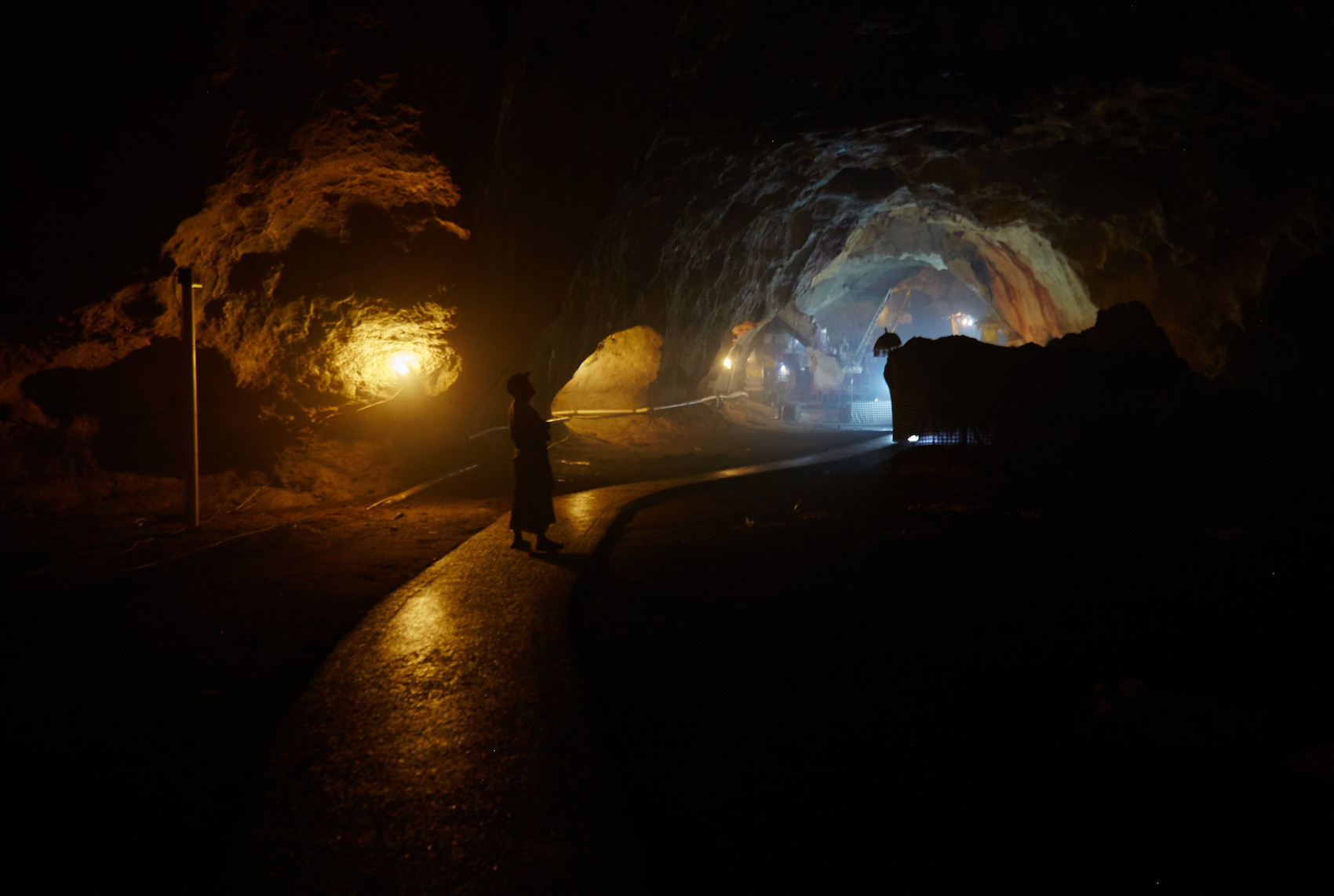
Goa Giri Putri is a Shivaite and Buddhist temple, which is pretty standard in Bali. What’s unique about it, though, aside from the fact that it’s in a massive cave, is that it’s also a goddess temple. ‘Putri,’ in fact, roughly translates to ‘princess.’ Walking through the temple’s dark caverns and corridors, you’ll encounter any number of smaller shrines dedicated to various female deities.
Most notable, perhaps, is the shrine to the Chinese Buddhist goddess of compassion, Guanyin. Though the Chinese are known to have had an early influence on ancient Balinese culture, it’s pretty unusual to see goddess statues of the regular Chinese style sitting in a Balinese temple.
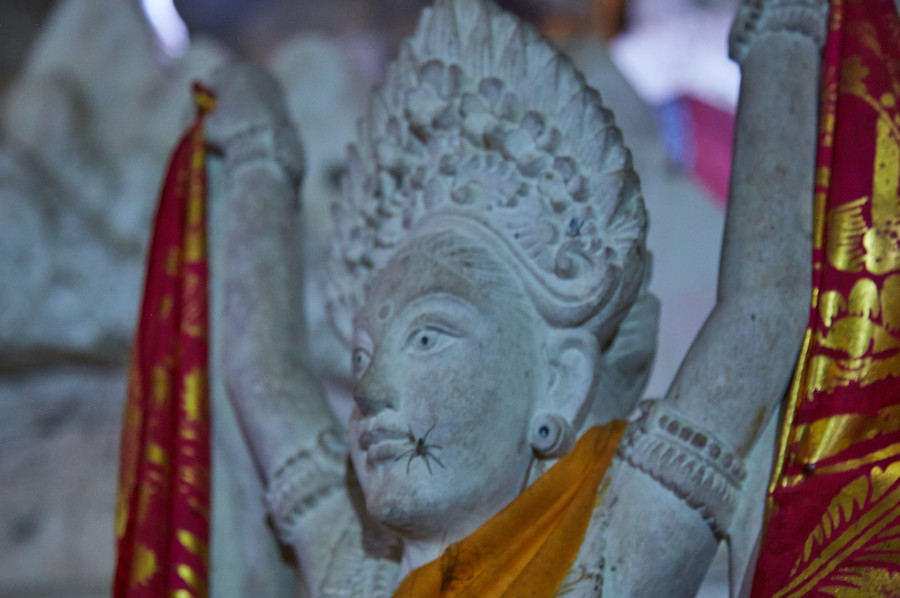
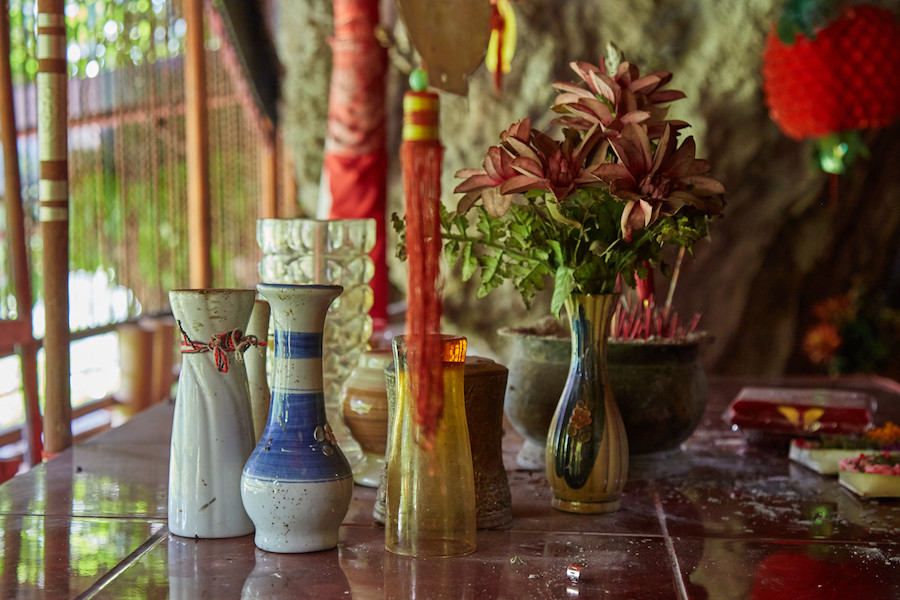
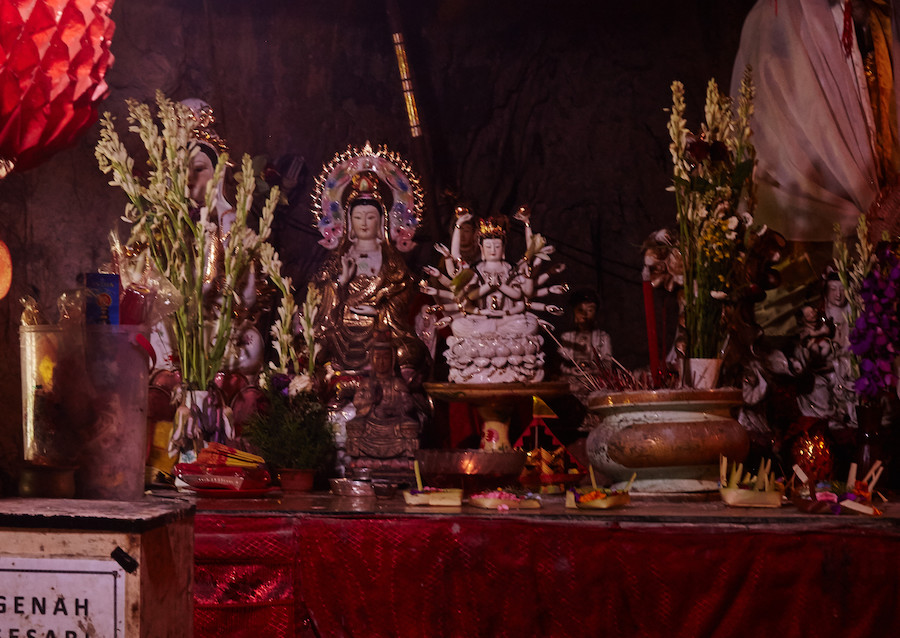
Goa Giri Putri is also known for its holy water. The significance of holy water in Balinese religion cannot be understated, as it’s necessary for just about every type of ritual. Though certain types of holy water can be created from normal water with a priest’s blessing or through other special means, natural sources of holy water such as this cave temple are highly revered.
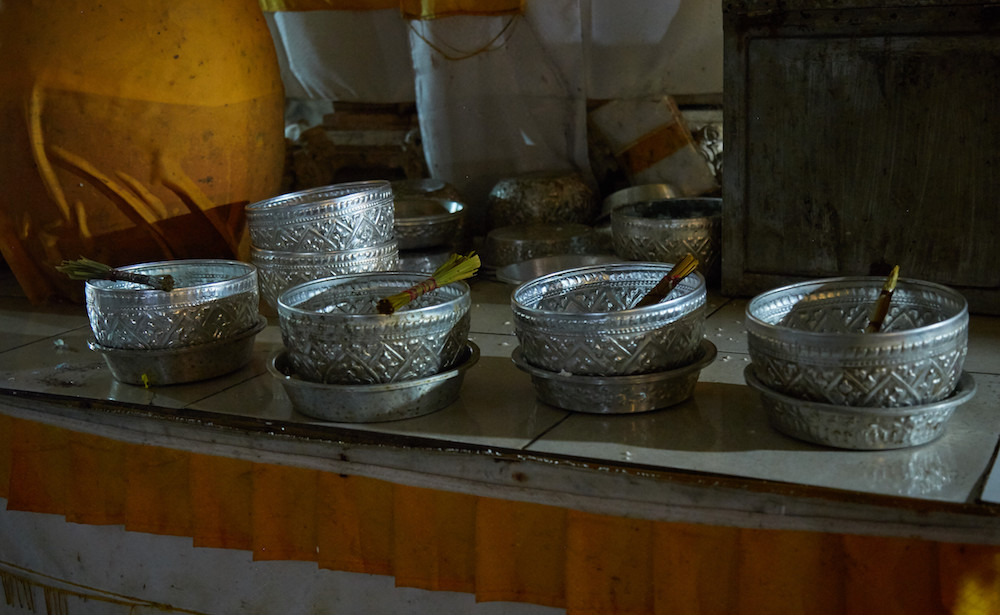
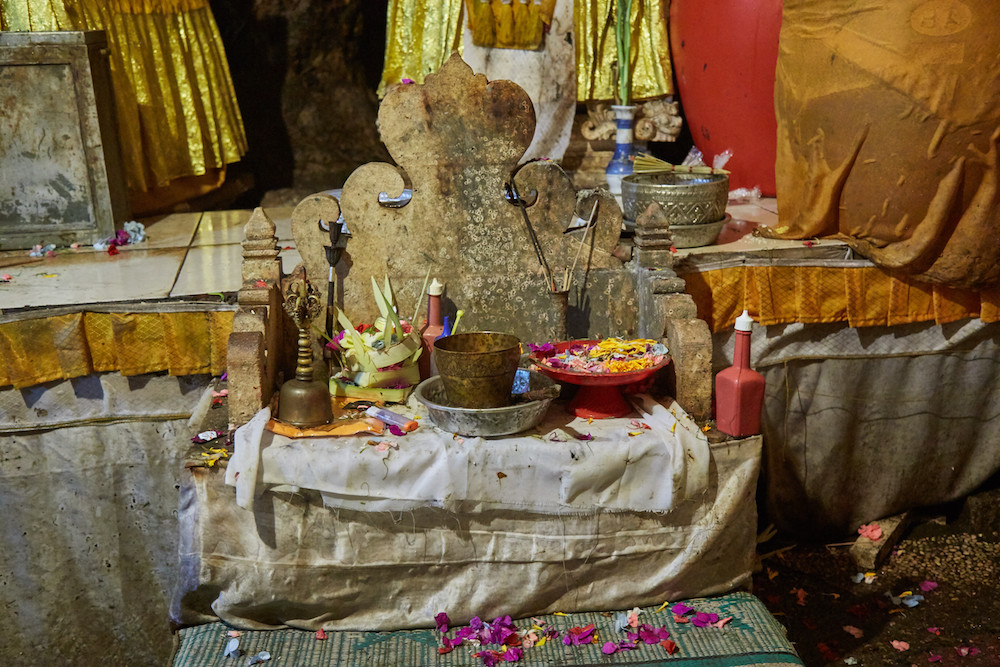

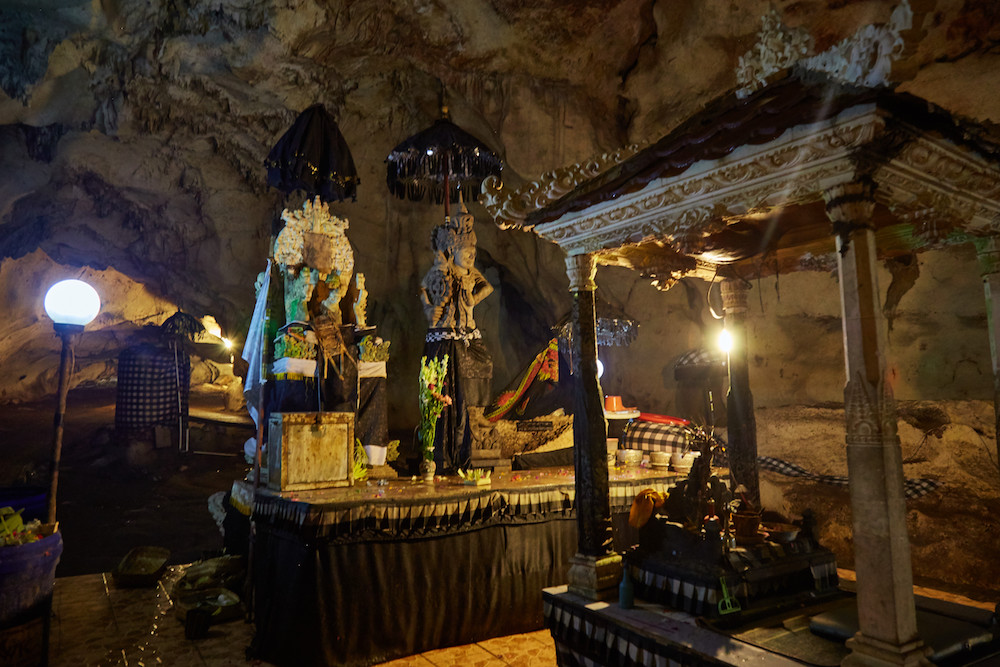
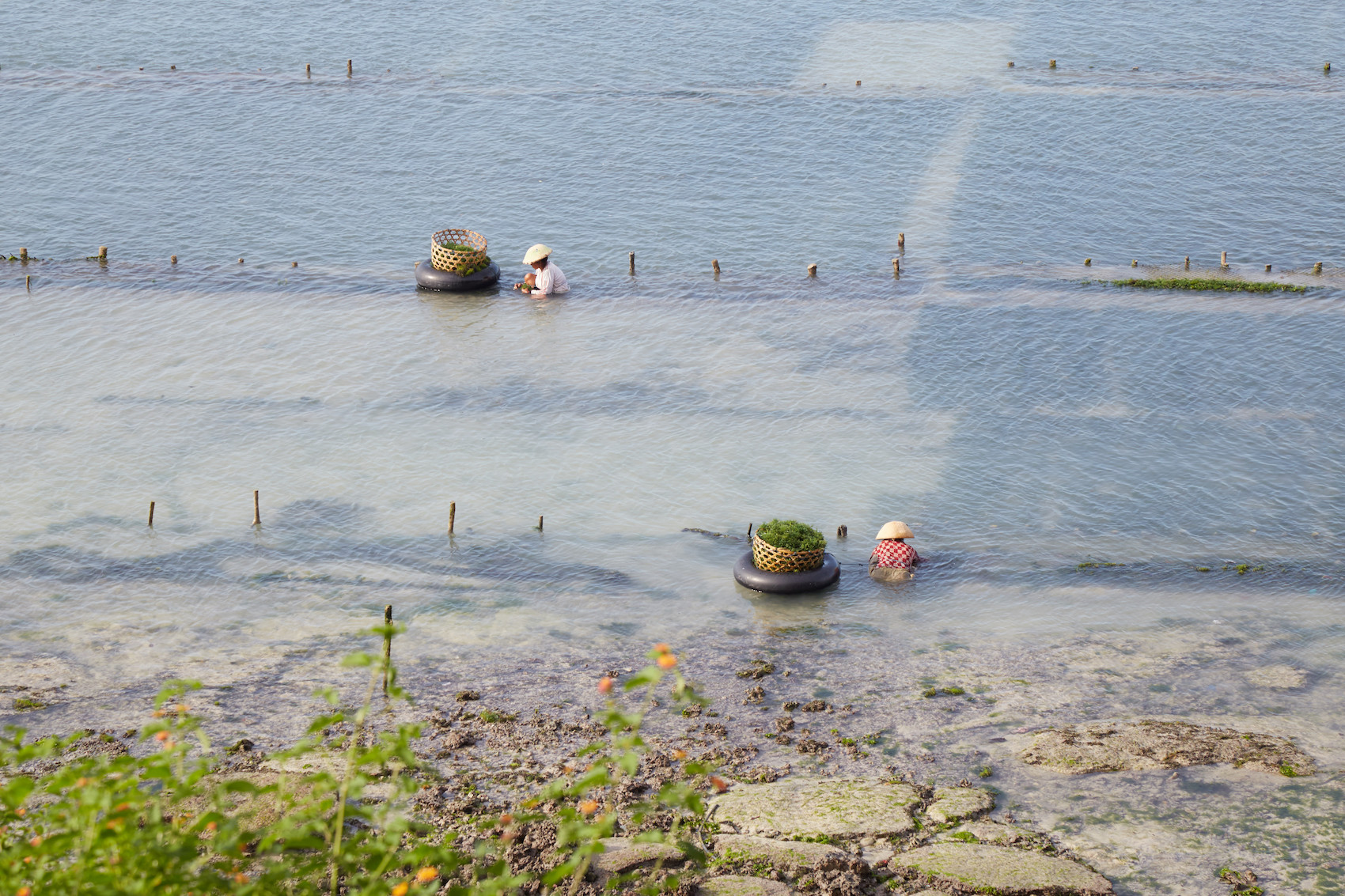
Further Along The Coast
On the way to see two more temples situated along the coast, my guide and I made a couple of stops to appreciate the stunning ocean view. It seemed that everywhere we went, seaweed farmers were busy doing their thing along the island’s shore.
Seaweed cultivation is the main, if not pretty much the only, industry on Nusa Penida. The final products are typically exported to China and Japan. The tourism industry, on the other hand, is still very limited, although that looks to be changing soon.
We came across more than a few new hotels under construction, one of which was managed by my guide’s boss. I had been staying on neighboring Nusa Lembongan, which is often touted as the place to visit to see the relatively untouched, unspoiled Bali of old.
I felt that I arrived too late, however, as construction is booming and traffic is already making its presence felt on Lembongan. Nusa Penida, on the other hand, may just well be the last untouched corner of Bali. Well, at least for now.
Pura Batu Medawu
The temple known as Pura Batu Medawu, one of the largest on the island, has a long and convoluted backstory which blurs the lines between history and mythology. The name of the temple itself refers to it as a place where part of a ship once broke apart.
According to legend, the ruler I Renggan, who happens to be the father of Mecaling, was sailing to Bali to wreak havoc on the local population there. His plan was thwarted by the gods, however, and his ship was broken into pieces. Supposedly, one of the bigger pieces smashed into the coast next to which Pura Batu Medawu now stands.
Furthermore, along with Goa Giri Putri, this temple is said to be one of the main residences of the goddess Parvati when she descends to earth.
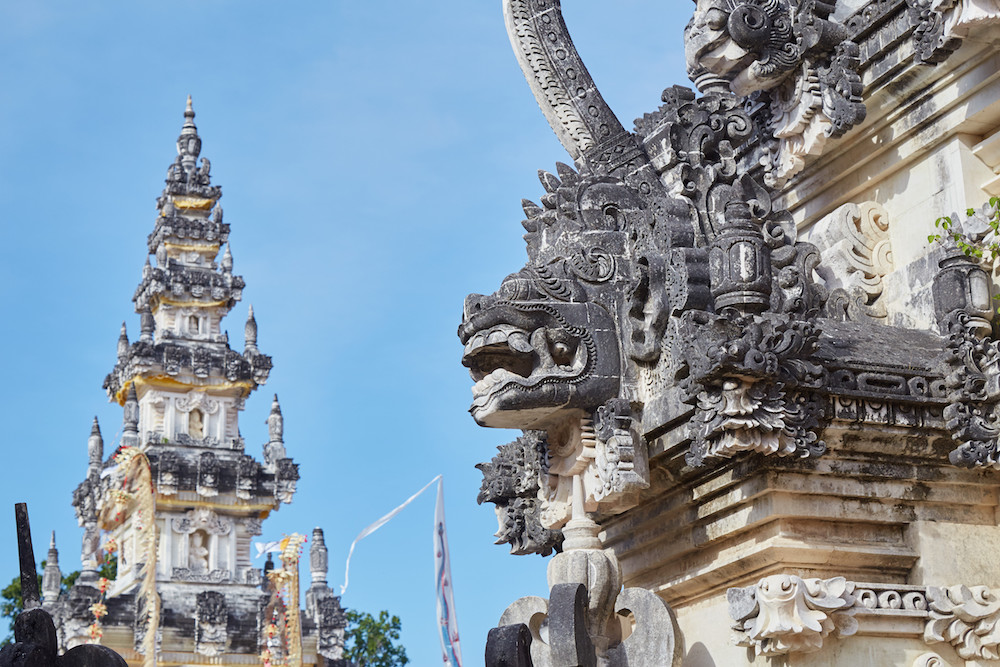

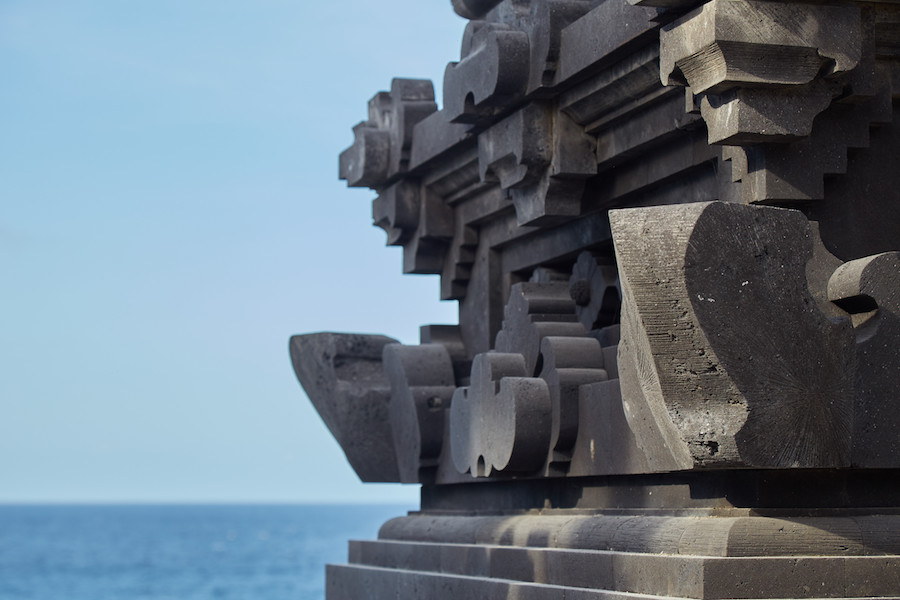
Pura Batu Mas Kuning
Just nearby Pura Batu Medawu is Pura Batu Mas Kuning, also known as Pura Karang Kuning. There don’t seem to be any special legends attached to this temple, but it’s well worth a stop for its excellent views of the ocean. If you look closely, you should be able to see Bali’s Mt. Agung as well as Lombok island in the distance.
After appreciating the views and walking around the area to explore even more shrines just nearby, it was finally time for this afternoon excursion to come to a close.
For those with more time on Nusa Penida than I had, another significant temple in the area is Pura Puncak Mundi, located in the center of the island on its highest point. Additionally, the island is said to have some of the most idyllic beaches in all of Bali.
Nusa Penida contains the perfect mix of scenery, magic and mystery, and is a must-visit for those with a special interest in Balinese religion and philosophy.

Additional Info
In regards to Nusa Penida tours that you can book online in advance, there unfortunately don’t seem to be many options which focus on the cultural sites featured above. Most tours are entirely focused on beaches, like this one and this one.
But there is a highly-rated customizable tour option available, so it’s worth contacting the tour operator and asking if they can bring you to some of the island’s main temples.
From Nusa Lembongan:
Getting to Nusa Penida from Nusa Lembongan is tricky, as daily public boats only leave at 6am. If you’re a morning person, you should be able to catch a boat from the yellow bridge between Nusa Lembongan and Ceningan. Otherwise, you’ll have to charter a private boat.
Despite the ride taking no more than twenty minutes, local boat owners tend to charge a lot for their services. I paid Rp. 500,000 round trip for my transportation between the two islands, which is actually considered a pretty good deal.
I also paid more, of course, for a guide to show me around, which I would recommend if you only have several hours on the island. Otherwise, you should be fine getting around on your own.
From Sanur:
It’s also possible to reach Nusa Penida directly from Sanur. Companies such as Caspla Bali Boat, Maruti Express and Mola-Mola Express all run fast boats to the island. There are only a three or four boats a day run by each company, ranging from early morning to late afternoon. Round trip tickets for each company should cost you Rp. 300,000.
While I didn’t stay on the island myself, some of the highest-rated hotels on Nusa Penida include The MG Villa & SPA (high-end), Permata Hill Nusa Penida (budget-friendly) and Nusa Penida Pudak Nature Bungalow (budget-friendly).
I stayed on Nusa Lembongan, which has plenty of great sights to see. But if I could do it over again I would’ve stayed on Nusa Penida instead. What I ended up finding on Nusa Penida, at least in regards to overall vibe and scenery, is exactly how I expected Nusa Lembongan to be before arriving there.
On Nusa Lembongan I stayed at a place called Suba Homestay (not to be confused with Suba Guesthouse). The room was well-located, clean and I had my own private bathroom, all for under $20 USD a night. Prices will vary according to season, of course.
Other top-rated options include TS Hut Lembongan and Pattri Garden Lembongan.
You should be able to find motorcycle rentals for Rp. 50 – 60,000 a day. Nusa Penida has virtually no traffic and the roads seem to be in much better shape than the ones on neighboring Nusa Lembongan. The island is much, much larger than Lembongan, so be sure to have a map with you if you plan to do any exploring off the main coastal roads.
As mentioned in the article, I got around the island with a guide. If you only have time for a single-day excursion like I did, this would be a good option. Not only can a local arrange a sarong for you when necessary and teach you about important temple etiquette, but they’re also familiar with the time it takes from temple to temple. Had I been completely alone, I’d have had little idea how to efficiently budget my limited time.
If you have a couple days to spend on the island, though, you should have plenty of time and freedom to ride around the island and explore at your leisure.
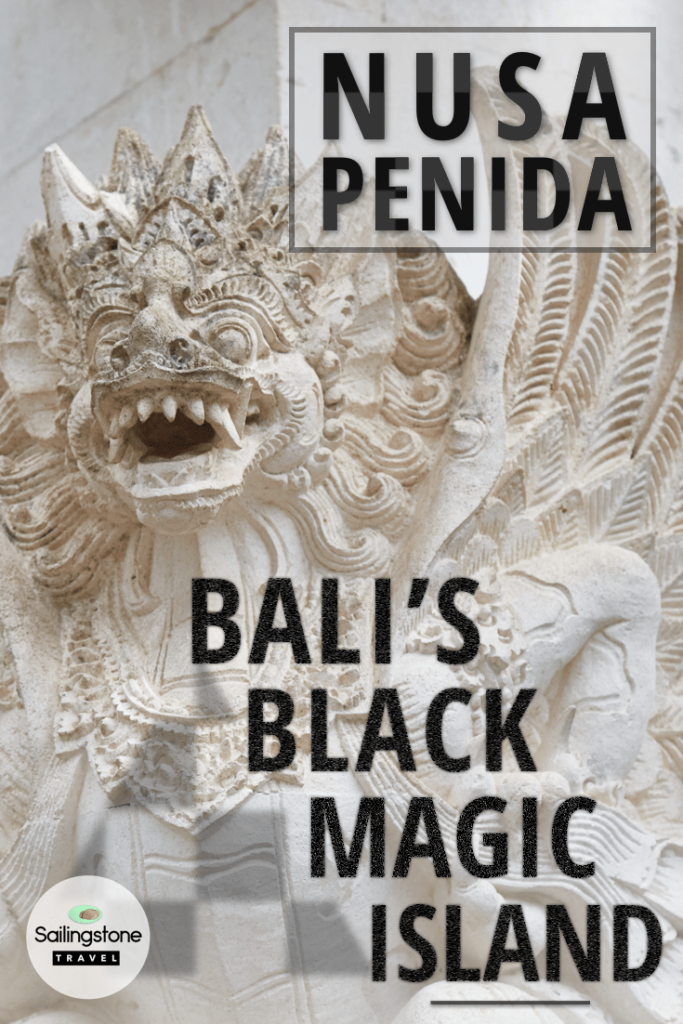
Pin It!

[…] term “Black Magic in Bali”, and came up with plenty of stuff, almost all written by Westerners. This piece is particularly interesting. Strangely enough, the locals don’t seem as keen to discuss the […]
[…] Penida. Home of mantas, Jero Gede Mecaling and black magic. Wait, what? (Click on the links for […]
Your post was not just informative, but also a joy to read. Your writing style is exceptional.
Thank you!
You have incredible gift for making difficult topics accessible to everyone
Thank you!